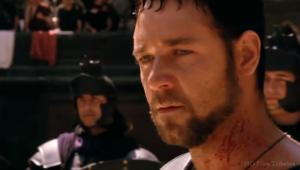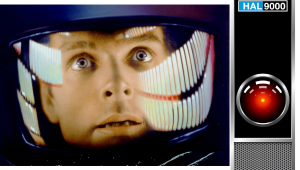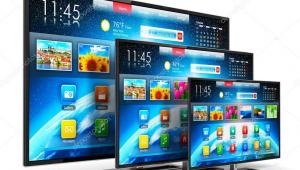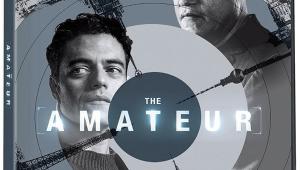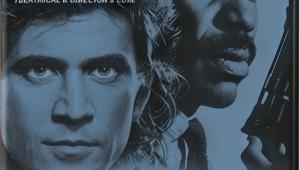Buy it Again, Sam
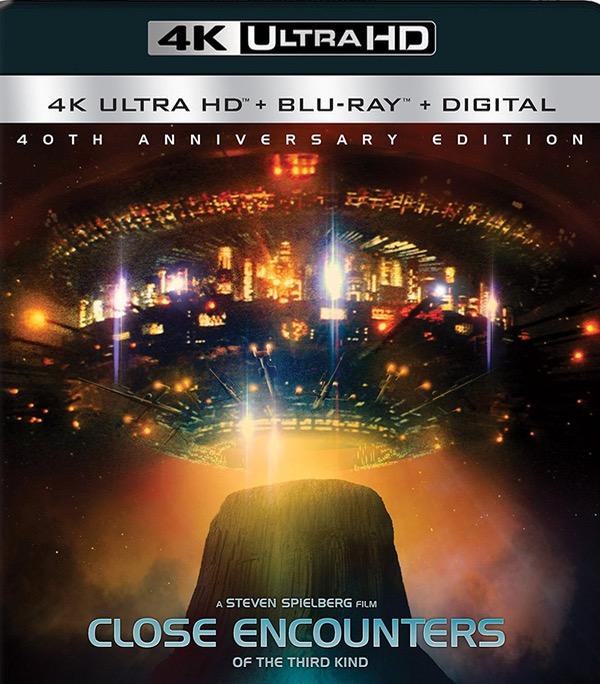
One good sign is that the pressure from streaming appears to be keeping down the price of the catalog UHD disc titles. While the going street price of new releases on UHD Blu-ray has settled down to arounds $28-$30 (in my opinion still too high if they want to keep the new format growing), catalog titles are typically $5.00 lower. But is that enough?
It seems to be. Even my local Walmart, in a semi-rural area with a population of less than 20,000, in a county of around 150,000 with three other Walmarts, carries most of the new and catalog UHD titles (the nearest Best Buy is an hour round trip away, plus a $6.00 round trip bridge toll, which sort defeats any possible additional savings on the disc!). And they sell. Sometimes, however, it takes shops in my area a couple of weeks past the street date to get in a hot new-movie title like Guardians of the Galaxy Vol.2.
But I digress. I’m one of those buyers who will refresh the best titles in my collection over and over again. I now have over 70 UHD titles, and only a few of them were freebees sent to me for review; the others I bought at the same prices you pay. I feel your pain!
Streaming is not an option for me. I need the very best quality sources for reviewing video and audio. And even if I could make do with less on a simply personal viewing level, I don’t want to. Wireless streaming can be very good, but its quality depends on a number of factors including your download speed, the distance from the wireless router to the receiver, the time of day, and other activity on the server (my download speed tops out at roughly 56Mbps at the router, dropping to 33Mbps near the television at 10AM with no other internet activity in the house). A wired connection isn’t possible for me, a situation likely common to most of you.
Apart from video quality, which can range from good to less than HD (much less UHD) via streaming, audio is a separate issue. Most streaming sites employ Dolby Digital Plus, which uses lossy compression vs. the lossless Dolby TrueHD or DTS-HD Master Audio you’ll get from Blu-ray. But DD+ is at least better than plain old Dolby Digital, right? Wrong. DD+ was first developed to provide the same sound quality as Dolby Digital at roughly half the latter’s data rate. While DD+ can be used at a higher data rate for better than DD (but still lossy) sound quality, do you believe that streaming services are upping the data rate to make us perfectionists happier? Or are they using the equivalent to DD-quality data rate (or less) to save bandwidth when they know that most of their customers won’t complain? Do those questions even need an answer?
So I (we?) will continue to buy Ultra HD Blu-rays for as long as they make them and I can still afford them. But I don’t want them to turn into another niche format like Laserdisc, where we’d be lucky to get one or two new titles every month. Remember Laserdiscs? I do, and still have a hundred or so sitting idle, along with two players! The last time I pulled out one of the titles to watch I couldn’t believe that we once sat in awe of their picture and sound. The former was 480i composite video, and the latter mostly analog 2-channel Dolby Surround with matrixed center and surrounds. And by Dolby I don’t mean simulated Dolby Atmos, which Dolby has decided to call Dolby Surround to make things as confusing as possible for we veteran videophiles.
Two recent catalog titles to burrow their way into my wallet were Close Encounters of the Third Kind and Blade Runner. I was never a huge fan of either movie, but both are prime examples of their directors’ best early workSteven Spielberg for Encounters and Ridley Scott for Blade Runner. Both of them display some good and not-so-good qualities on UHD Blu Ray.
Most of the not-so-good involves issues of variable picture quality likely due to the source material. Blade runner comes off best in that department. It’s a very dark movie, but shadow detail is well handled. There’s occasional excessive grain, but that might well have been deliberate and in support of the gritty subject. Occasional shots, such as the first appearance of Rachael and, shortly after that Tyrell, as they walk in from a distance to greet Deckard, are barely HD in their resolution, much less UHD. But the look of the movie always fits the mood of the film. The sound is so good it might have been recorded yesterday rather than 35 years ago. The opening shot, flying through the rain- and fog-soaked Los Angeles (which is apparently what the filmmakers of 1981 thought LA would become by 2019lots of other bad predictions here, such as a pay videophone and CRT displays), was as mind-blowing on my 96-inch wide screen as it had been when I first saw it in an LA theater.
I was never a fan of the naïve, new-agey, rose-colored-glasses take on our potential first meeting with aliens as depicted in Close Encounters of the Third Kind. But I’m aware that I’m in the minority that realizes that communication with such aliens, apart from the “friendly or hostile” issue, would be monumentally more difficult than this film suggests. Want a more realistic take on this? Watch Arrival. The picture quality on Close Encounters is also a bit variablecrisper in bright scenes than in darker onesbut this was not as big an issue as my feelings about the story.
Since I tend to skip over the silliness of the shaving cream and mashed potato scenes, I may have missed other flaws. The sound here was excellent, though this is not my favorite John Williams score, anchored as it is to the monotonous the da-da-da-da-da motif that’s a key to the story.
And oh yes, when the humans line up for their entry into the alien ship for what will presumably be the voyage of a lifetime, all I could think of was an old, classic Twilight Zone episode, “To Serve Man.” At least Rod Serling was a realist!






